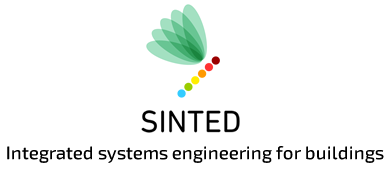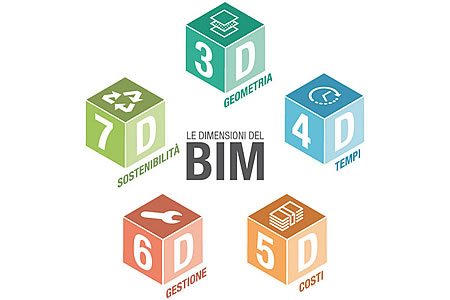BIM (Building Information Model) is the most intuitive way to define the topics that come into play in building digitization is to refer to "dimensions." If for geometric description alone the three 3D dimensions, which have been known to all for a long time, suffice, other descriptive modes are needed to introduce other information, which carry with them the introduction of other dimensions, for example: time, cost, etc.
In a "BIM based" project, the catagulation of information according to dimension is as follows:
- 3D: three-dimensional restitution of the artifact
- 4D: duration analysis
- 5D: cost analysis
- 6D: management phase of what has been realized
- 7D: sustainability assessment
While in the international standard it is the 6th dimension to take into account sustainability management, we include it as the 7th in line with what is expressed within the UNI 11337 standard that provides:
- the programming management modes (4D-Programming)
- the modes of economic information management (5D-Computations, estimates and valuations)
- the information management modes of the work (6D-Use, operation, maintenance and decommissioning)
- the modes of managing externalities (7D-Social, economic and environmental sustainability)
Sustainability can be viewed from three different perspectives; in fact, we speak of sustainability:
- environmental, posed in terms of the ability to reproduce and maintain natural resources,
- economic, understood as the ability to generate income and employment,
- social, looking at it as generating human well-being.
Talking about sustainable design is not simple, especially from the perspective of innovation; it is the amount of technology (systems, automation, etc.) present and fully integrated within a building that contributes to what is its sustainability.
Fitting this concept onto a work and thus talking about sustainable design is not always simple, even more so doing so from the perspective of innovation.
The sustainability of a building does not pass only through its systems or the automation systems installed but also through the methodologies applied that through process programming allows the building to be managed in a simpler way by enabling the analytical processes involved today in evaluating the concept of sustainability of a structure to be more efficient.
Just think of the world of energy analysis, which is thus preparing to move from the "stationary" to the "dynamic" regime, or the analyses (LCA, etc.) and multi-criteria evaluation methods (LEED, ITACA, etc.) that will certainly thus be able to benefit from more and more data that are close to reality and consequently can provide better outputs.



 Integrated systems engineering
Integrated systems engineering